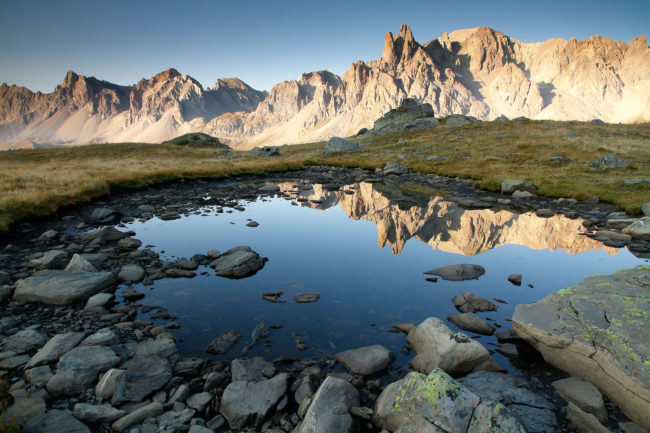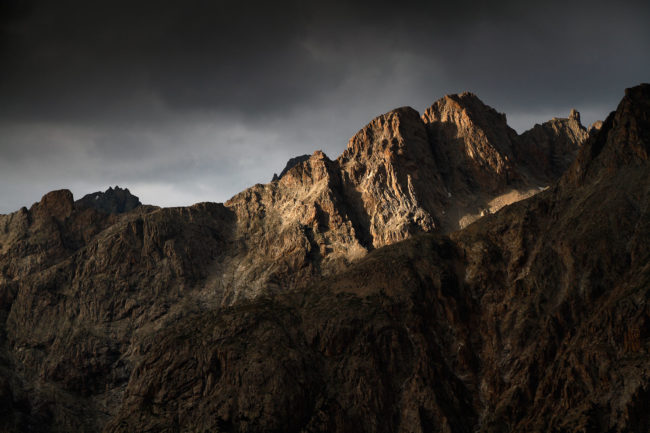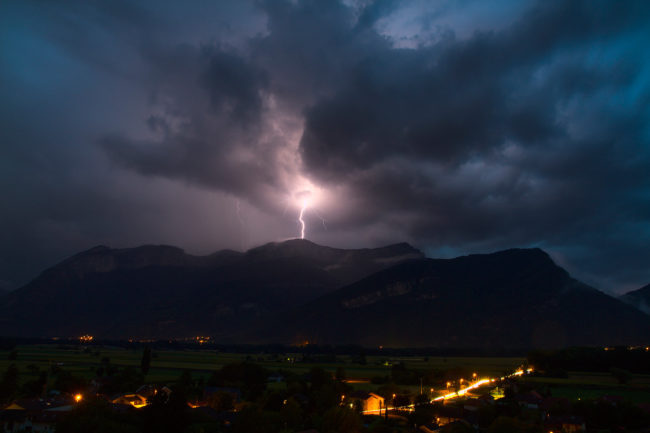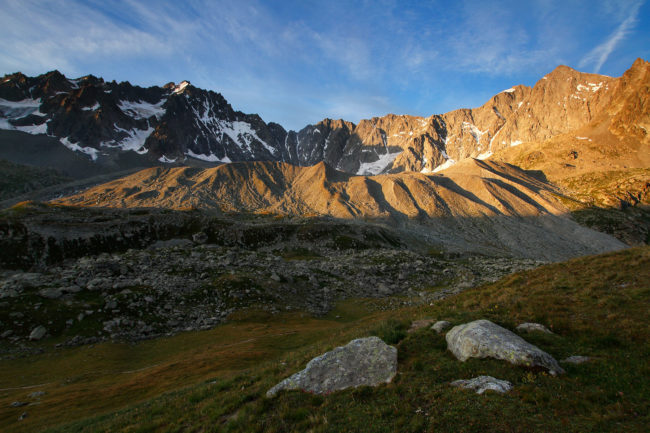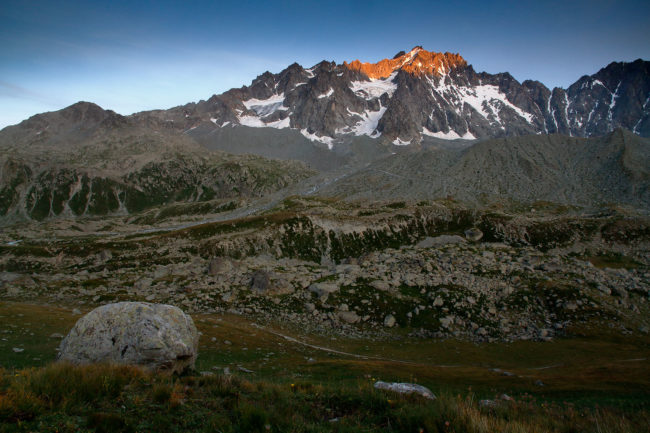Blog
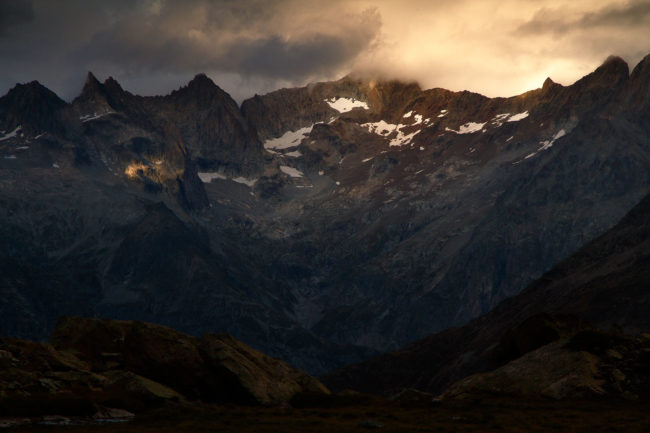
Les nuages défilent et déploient leurs ombres. Ils s’embrasent avec les sommets dans la lumière d’une fin d’après midi.
Massif du Soreiller. Parc National des Ecrins. Aout 2020.
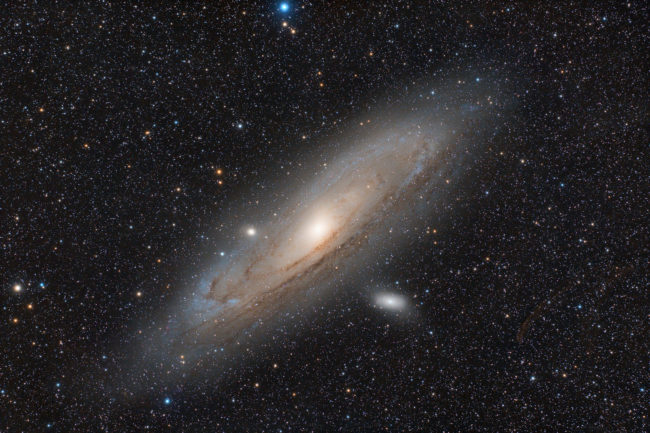
La fille d’à côté,
La voisine,
Grande est belle.
Enfin surtout en photo parce que en visuel c’est plutôt une grand tache floue. J’appelle ça une grande arnaque cosmique pour les débutants. La Galaxie d’Andromède est la grande galaxie située juste à côté de la notre à seulement 2,5 millions d’années-lumière. C’est la plus connue. C’est l’objet le plus lointain que vous pouvez voir à l’œil nu. Alors forcément, le débutant en astronomie va vite pointé son télescope tout neuf dessus pour voir… une tache floue ! Et là, on va le voir se pointer sur les forums pour demander s’il a bien pointé au bon endroit ou si son télescope ne serait pas déréglé. Non non, tout est normal, il n’y a juste rien de plus a voir ! En fait, il vaut mieux l’observé avec une simple paire de jumelle.
Pour cette photo les acquisitions on été faites dans la nuit de Samedi 17 octobre au dimanche 18 dans des conditions assez particulière. 0°C et 100% d’humidité. Je me demandais si c’est aussi humide quand il pleut ! Tout était trempé. J’essuyais l’écran du PC au kleenex. Sur la lunette j’ai une résistance chauffante pour éviter la buée qui a très bien fait le boulot, a mon grand étonnement. Le Nikon Z6, lui, refusait de reconnaitre la fausse batterie qui me permet de l’alimenter avec une grosses li-ion 4S. Obliger de lui mettre la vrai batterie ce qui a forcément limité l’autonomie. A 4h du matin était couvert d’une bonne couche de givre. Et pour finir, il y a un reflet. Donc il faudra que je la refasse. Probablement dans 4 ou 5 ans, le temps de réunir les bonnes conditions au bon moment.
49 poses de 1 minute
Nikon Z6 défiltré partiel
Lunette Takahashi FSQ-106ED.
Monture Takahashi EM-200 électronique fait maison.
Guidage : ZWO ASI290MM Mini sur diviseur optique QHY OAG-M
Température : 0°C
Humidité : 100%
SQM : 21,55
Logiciels : auto-guidage avec PHD2, acquisitions avec Astro Photography Tool, traitement avec PixInsight.
Site : L’Epine
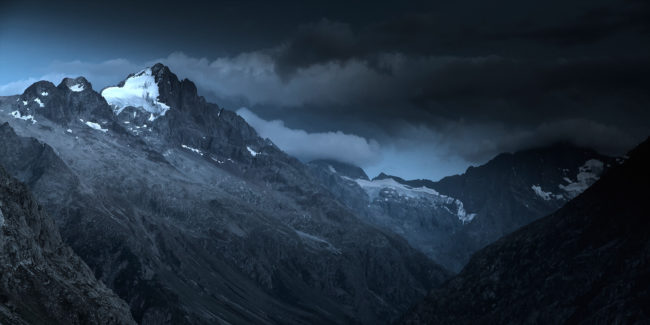
L’heure bleue dans les Ecrins. Tout est très calme. Seul le murmure des torrents qui descendent des valons tout en bas viens rompre le silence.
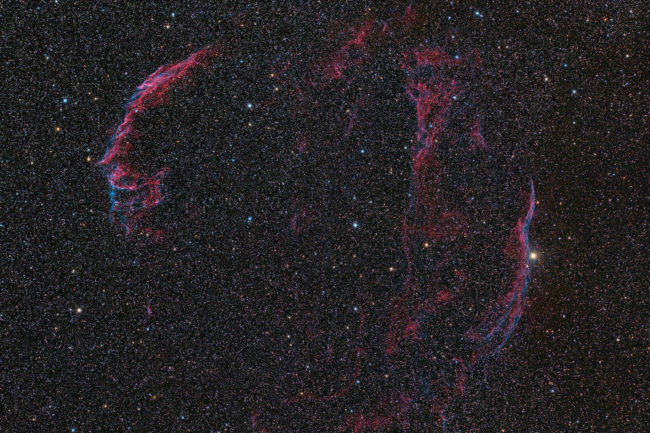
Les restes d’une étoile qui a explosée il y a un dizaine de milliers d’années. On appelle ça un rémanent de supernova.
C’est un grand classique d’été. Je ne manque jamais d’allé l’observer en visuelle. C’est un plaisir de se balader le long des filaments, de passer de la grande dentelle (à gauche) à la petite (à droite) en passant par les Volutes de Williamina Fleming. Parfois, quand le ciel est vraiment bon, il m’arrive de percevoir d’autres partie plus faible.
60 poses de 1 minute
Nikon Z6 défiltré partiel
Lunette Takahashi FSQ-106ED.
Monture Takahashi EM-200 électronique fait maison.
Guidage : ZWO ASI290MM Mini sur diviseur optique QHY OAG-M
Température : 23°C
SQM : 21
Logiciels : auto-guidage avec PHD2, acquisitions avec Astro Photography Tool, traitement avec PixInsight.
Site : Le Plan, Col du Banchet
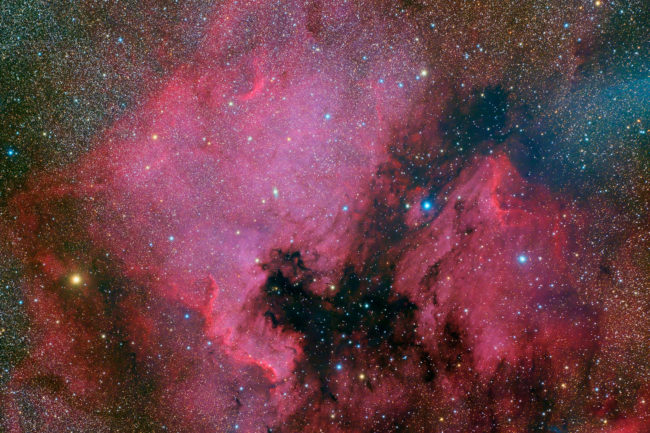
Oui, ils ont même leur nébuleuse… je ne vous indique pas où est la nébuleuse North America ni pourquoi on l’appelle comme ça, c’est assez évident. Elle porte le matricule NGC 7000. A sa droite, se trouve la Nébuleuse du Pélican, IC 5067 et IC 5070. Le volatile est un peu plus difficile à reconnaître.
Ces nébuleuses ne représente qu’une partie du complexe H-alpha qu’on trouve dans le Cygne. On trouve de l’hydrogène ionisé dans un grande partie de la constellation et même au delà.
90 poses de 1 minute
Nikon Z6 défiltré partiel
Lunette Takahashi FSQ-106ED.
Monture Takahashi EM-200 électronique fait maison.
Guidage : ZWO ASI290MM Mini sur diviseur optique QHY OAG-M
Température : 7°C
Humidité : 84%
SQM : 21.4
Logiciels : auto-guidage avec PHD2, acquisitions avec Astro Photography Tool, traitement avec PixInsight.
Site : Le Serpaton, Gresse-en-Vercors


